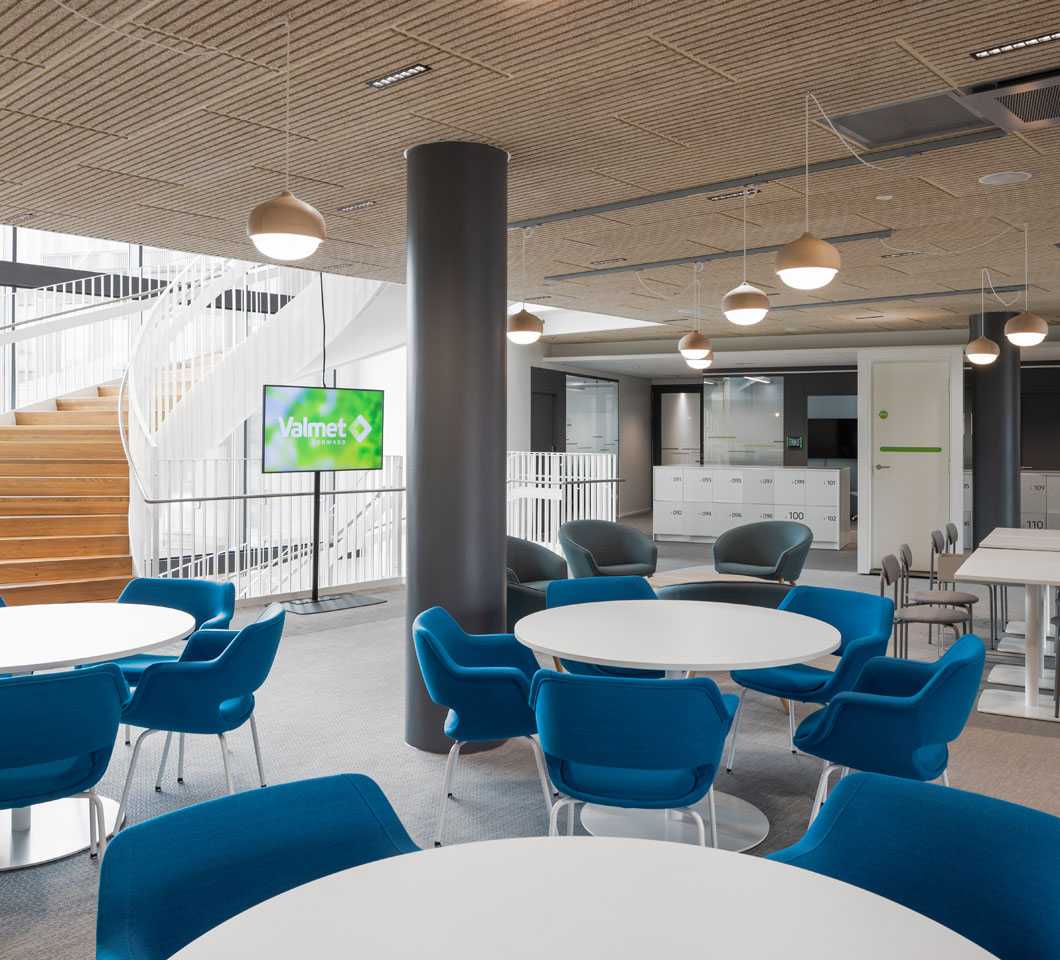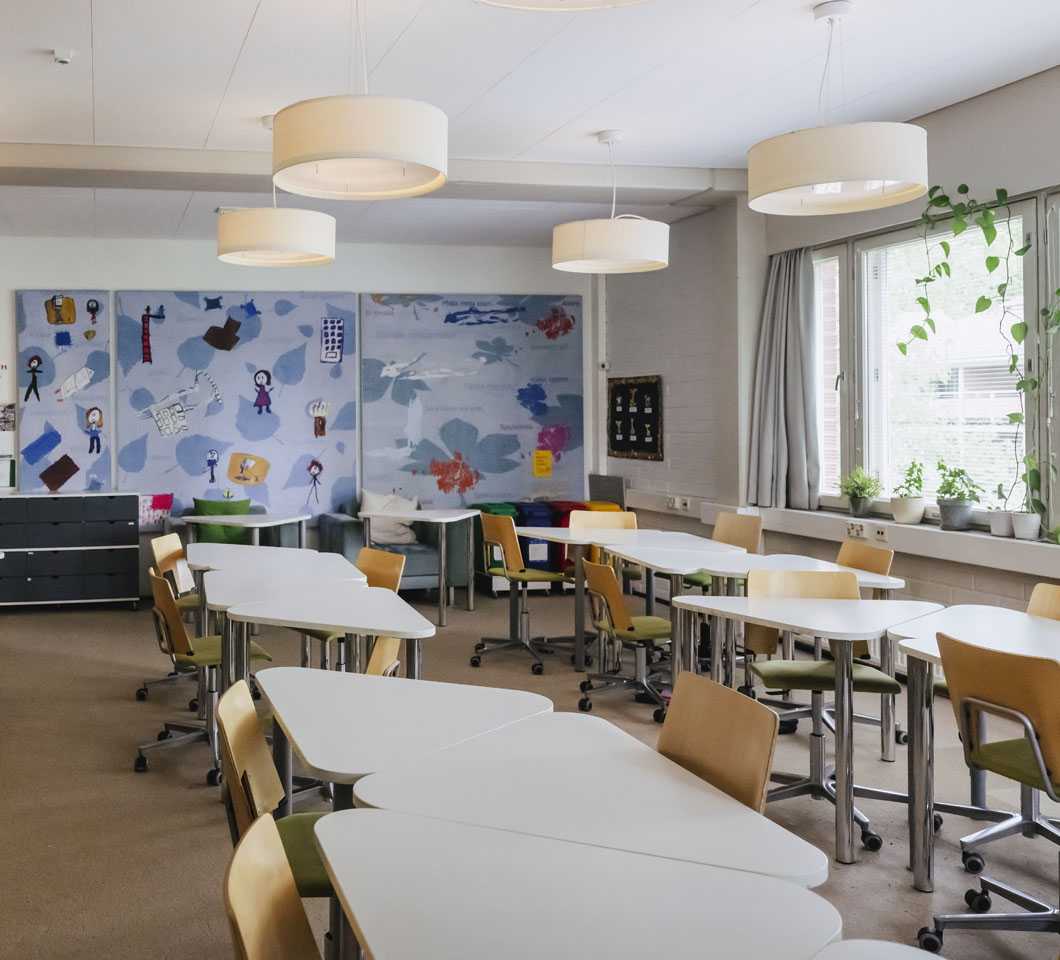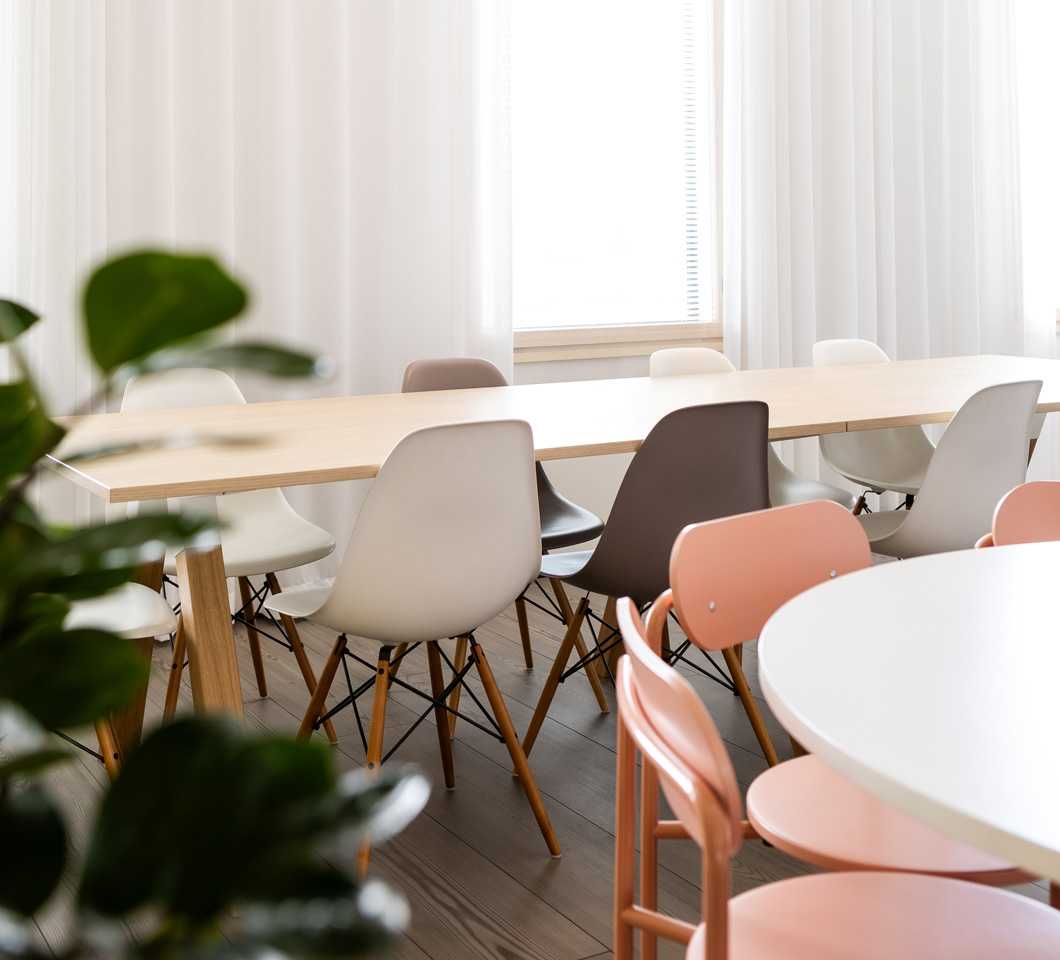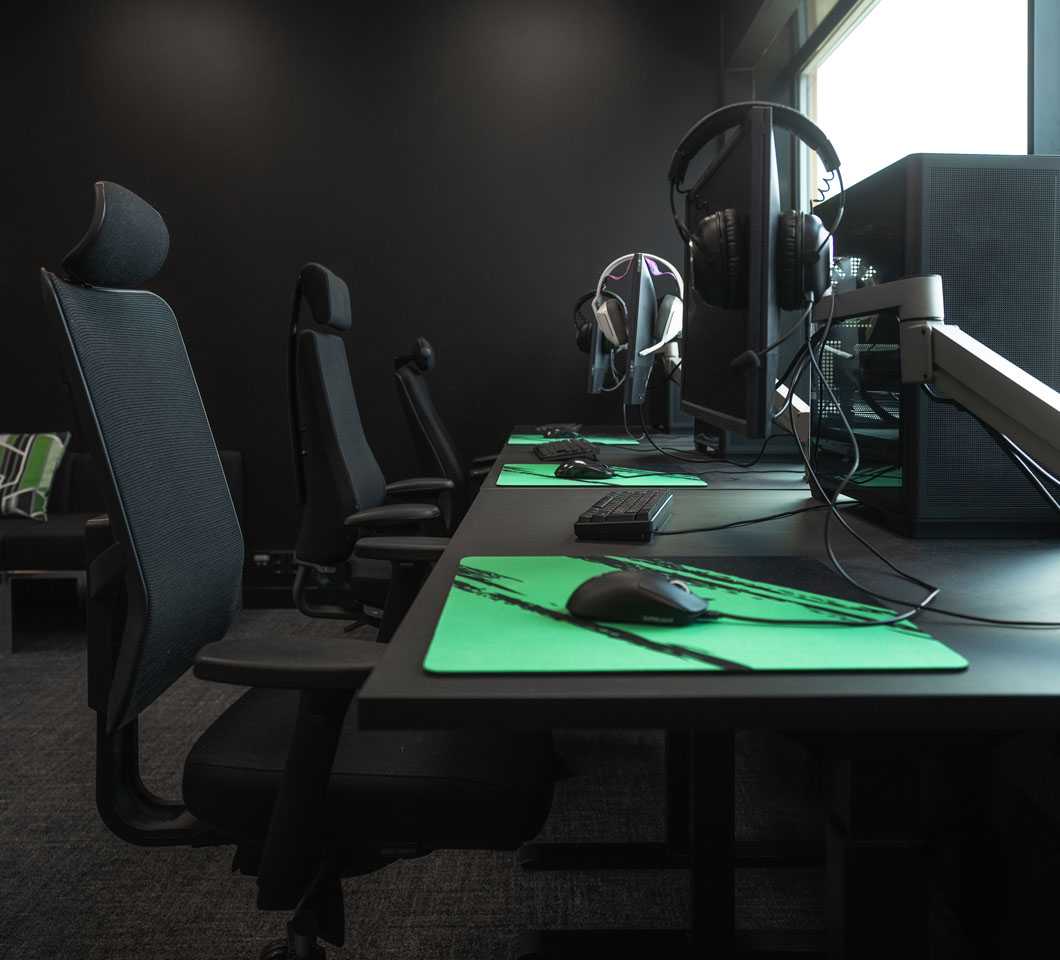The financial and personnel administration of the City of Espoo – that is, Espoo Economic Management and Espoo Personnel Services – needed new facilities for their 200 employees. The facilities needed to be flexible, and to support wellbeing at work and meet the future needs of the organisation. The modification project was mainly implemented during 2017 and 2018.
The project was based on the City of Espoo’s facility vision for 2035, which determines the goals related to the city administration’s facilities.
The purpose of the project was to create facilities that serve all users. The key goal was to create an environment where the employees can always choose a space that best suits their work at the time. The project also aimed for more efficient use of space.
Preparing for the future
The units of Espoo Personnel Services and Espoo Economic Management were located in different buildings. With the project, all units moved to the same facilities in the office building at Kamreerintie 5.
To implement the change, the City of Espoo chose the specification and planning tools from the Martela Lifecycle model that best suited its needs.
The work environment modification project began with an analysis of the existing situation. This included a discussion with the management on goals, a workplace survey for all employees and measurement of the workplace utilisation rate, as well as workshops to encourage employee participation. The planning phase included the creation of a comprehensive concept and draft plan and an interior design plan, as well as pop-up workshops for employees to discuss the desired change.
The third phase was about putting plans into practice. This included the employees’ move to the new facilities, as well as transporting new and old furniture and recycling furniture.
Everyone participated
The modification project began with the most important aspect: encouraging the employees and supervisors to participate. At the beginning of 2017, it was decided that Espoo Personnel Services would move to the new facilities, in addition to Espoo Economic Management. Consequently, the employees and supervisors of Espoo Personnel Services were also involved in the change process.
The analysis phase provided important information about the similarities and differences in the ways of working and workplace cultures of the two organisations. This information was used to determine what type of facilities the work environment should have and where these facilities should be located. Martela was responsible for the implementation of the entire planning process.
Facilities that meet the needs – even in the future
The modification project for Espoo Personnel Services and Espoo Economic Management was completed in late 2018. The customer expected user-centric design in line with the principles of sustainable development, continuous support for change management and the organisation and implementation of removals and recycling. Organised in line with the Martela Lifecycle model, the modification project met the customer’s expectations.
The purpose was to create a pleasant, comfortable and versatile work environment that meets the need for more efficient use of space and supports more extensive and smooth cooperation between employees. These goals were achieved.
“Our new facilities enable us to increase cooperation across teams, further develop our ways of working and further reduce our use of paper towards becoming a digital office. A well-functioning work environment also improves our employer brand and attracts new talent,” says Jutta Takala, Managing Director of Espoo Personnel Services.




